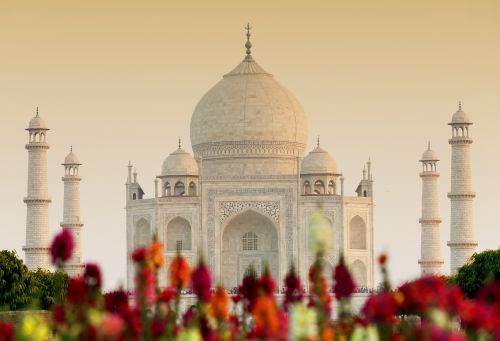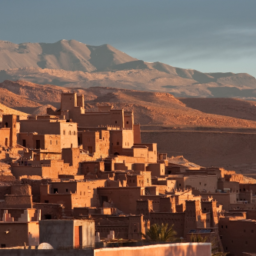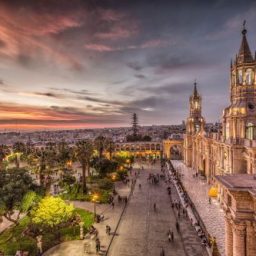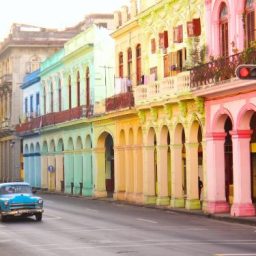

India is a great place to visit, there are plenty of secrets to discover! The amazing local diversity of languages will surely turn out one of such mysteries to uncover. There are 22 major official languages and hundreds of smaller dialects throughout India. Of all of them, Hindi is the most common official language, and English is also very popular.
So what are the other languages spoken in India? Well, you can come across a lot of languages with curious names such as Tamil, Telugu, Bengali, Marathi, Punjabi and Urdu. They will probably be difficult for most tourists to understand, unless they know one of the local dialects. And what exactly does it look like? We tell in the next part of the article.
Contents
What is the official language of India?
The main official language of India is Hindi, the most widely spoken language in the country. However, the Constitution of India recognizes a total of 22 official languages, including Hindi and English. Hindi is spoken by around 41% of the population and has more than 200 million native speakers, making it one of the most spoken languages worldwide. There are several dialects of Hindi, the most important being: Awadhi, Braj Bhasha, Bhojpuri and Rajasthani.
Other official languages include Bengali, Telugu, Marathi, Tamil, Urdu, Gujarati, Kannada, Odia (Oriya), Malayalam, Punjabi, Assamese and Nepali. There are also two official classical languages – Tamil and Sanskrit. They are no longer connected with any particular region of the country, but have been significant in Indian history.
Hindi is the most popular official language of India
An Indo-European language of Hindi, depending on estimates, is the fifth or even the third most spoken language in the world. It is the most popular official language in India and the first for 41% of the population. It is derived from Sanskrit, an ancient Indo-European language, and has its origins in northern India in the 11th century. Considered to be one of the oldest Indo-Aryan languages, Hindi is written in the Devanagari script and is a combination of Sanskrit, Prakrit, Persian and Arabic.
Outside of India, it has official status in 10 countries, including Nepal and Fiji, where it is considered a minority language. Hindi is also widely spoken by Hindu immigrants abroad who live in places such as Nepal, Mauritius, Fiji, Suriname, the United Kingdom, the United States and others. For many inhabitants of the country, Hindi is also the second mother tongue.
As for the difficulty of Hindi, it really depends on who you ask. Because of its distinctly different writing system and grammar rules, the language can be challenging for beginners. However, with practice and commitment, anyone can become fluent in Hindi.
Other official languages in India
India is a country divided into states and territories, and official languages are not uniformly recognized by all states. The arrangement of Indian languages is as follows:
- Assamese is recognized as official in the state of Assam,
- Bengali is recognized as official in the states of Tripura and West Bengal
- Bodo is recognized as official in the state of Assam
- Dogri is recognized as official in the state of Jammu and Kashmir
- Gujarati is recognized as official in the states and territories of Dadra and Nagarhaveli, Daman and Diu and Gujarat
- Hindi is recognized as official in the largest number of states and territories – Andamanda and Nicobar, Bihar, Chandigarh, Chhattisgarh, Delhi, Hariana, Himachal Pradesh, Jharkhand, Madhya Pradesh, Rajasthan, Uttar Pradesh and Uttarakhand
- Kannada is recognized as official in the state of Karnataka
- Kashmiri is recognized as official in the state of Jammu and Kashmir
- Konkani is recognized as official in the state of Goa
- Maithili is recognized as official in the state of Bihar
- Malayalam is recognized as official in the states of Kerala and Lakshadiva
- Manipuri is recognized as official in the state of Manipur
- Marathi is recognized as official in the state of Maharashtra
- Nepali is recognized as official in the state of Sikkim
- Oriya is recognized as official in the state of Orissa
- Punjabi is recognized in the state of Punjab
- Sanskrit is the literary language of ancient, medieval and early modern India, used in religious ceremonies and by small groups of people scattered throughout the country
- Santali is the constitutionally recognized official language of a group of tribes inhabiting the Chota Nagpur plateau (areas of the states of Bihar, Chhattisgarh, Jharkhand and Orissa)
- Sindhi is the language of the western border of Gujarat and Rajasthan
- Tamil is recognized as official in the states and territories of Puducherry and Tamil Nadu
- Telugu is recognized as official in the states of Andhra Pradesh and Telangana
- Urdu is recognized as official in the states of Jammu and Kashmir and Telangana
The names of the languages alone won’t mean much to you, so let’s move on to a brief description of the most important of them.



Assamese language
Assamese is the official language of the state of Assam in India. It comes from the group of Eastern Indo-Aryan languages and is spoken by over 16 million people in India. The main place where it can be heard is in the Assam region, where it is the lingua franca. Assamese is a relatively ancient language, spoken since at least the 7th century CE, and the Bengali script is used to write it.
Bengali language
Here’s another language worth looking into. It is also related to the group of Indo-Aryan languages and is written in the Bengali script. According to the Statista Research Department, Bengali is spoken by over 268 million people. It can be heard in Bangladesh and India, where it is considered official in the states of West Bengal and Tripura.
Dogri language
Dogri is another interesting language spoken in India. It has 2.6 million native speakers and can be heard in the states of Jammu, Punjab, Himachal Pradesh and Pakistan. Once considered a dialect of Punjabi, it is now recognized as a separate language. It was added to the Constitution of India in 2001 and can be written in both the Indian Devanagari syllabic alphabet and the Arabic alphabet.
Kannada language
Kannada is another language recognized by the Government of the Republic of India. It has 44 million native speakers called Kannadigas and comes from the Dravidian group of languages. It is mainly spoken in Karnataka and parts of Maharashtra, Andhra Pradesh, Tamil Nadu, Telangana, Kerala and Goa. Furthermore, it is written in South Indian script.
Konkani language
Another interesting language is Konkani, whose name is derived from the word “konkan”, meaning coast. It is mainly spoken on the west coast of India, in the states of Maharashtra, Goa and Karnataka, and it has 2.2 million native speakers. Various writing systems are employed, such as Devanagari, Malayalam and Latin. Muslim users, on the other hand, write it in the Arabic alphabet.
Marathi language
It is also worth to know something about the Marathi language. It comes from the Indo-Aryan language family and has around 83 million native speakers and is the third most spoken language in India. Marathi can be mainly heard in western India and has been spoken there for over a thousand years. For this reason, it is also prominent in old literary works.
Oriya language
Yet another language worth mentioning is Oriya. It is also called Odia and comes from the Indo-European language family. It is spoken by approximately 37.5 million people, mainly residents of Odisha and Hindus from some regions of West Bengal, Jharkhand, Chhattisgarh, and Andhra Pradesh. Not only that, but it is considered among the classical languages of India, which is a result of its rich literary history.
Telugu language
Telugu is another language spoken in India, with around 81 million native speakers. It is mainly found in Andhra Pradesh and is the fourth most widely spoken language in the country. It belongs to the Southeastern family of Dravidian languages and is written in a special South Indian script. Interestingly, the oldest Telugu literature discovered dates back to the 11th century.
Urdu language
The last language we want to highlight is Urdu, also known as Lashkari. Currently, it is spoken by about 50 million people in India. It can be heard in the states of Telangana, Uttar Pradesh, Bihar, Jharkhand, West Bengal and Delhi. The grammatical structure and basic vocabulary of Urdu are very similar to Hindi, but they differ in significant lexical differences. Urdu borrows from Persian and Arabic, while Hindi comes from Sanskrit. The two languages also have different writing systems.
English in India
The long period of British occupation meant that English was preserved in the country as a kind of lingua franca of India, and in 1965 it was granted the status of an official language. Today, despite the ever-growing popularity of English in the country, Hindi remains the most widely spoken language in India. However, there is no denying that English is widely spoken and understood in most parts of India, making it easy for both travellers and locals to communicate. The Indian film industry, Bollywood, also strongly influences the presence of the English language in the public sphere. While the films themselves are not in English, their titles and promotion often happens in this language, and the soundtracks are full of English songs.
English is also the most widely taught foreign language in the country and generally recognized as the language of business, both domestic and foreign. In addition, English remains an important part of the Indian educational system and is often used as a common language for speakers of various Hindi dialects or other regional languages. It is also used in state institutions, and most laws are written in both English and Hindi.
So don’t worry if you haven’t learned a word of Hindi before your next trip to India – for tourism and even business purposes, English is definitely enough.
What future awaits Indian languages?
According to official statistics in India, English is spoken by only 13% of the population. In some states, it is the first language of the people, but most Indians treat it as an auxiliary language. In reality, however, its presence is greater than one might expect.
Through the years of close coexistence between national languages and English, the so-called Indian English has emerged. It is quite a specific blend of Indian dialects and the language of Great Britain, which consists of numerous borrowings from the English language. This variation can be easily found in India, as it is used even in many institutions, such as government offices, media and universities. Nevertheless, English still only coexists with local languages and remains the language of the colonizers for Indians.
Languages of the world with Skrivianek
With so many languages spoken in India, there is something for everyone willing to learn. And learning any foreign language grants you numerous benefits, such as better communication with people from other countries, career advancement, cultural awareness, enhanced memory and focus, and the ability to adapt to new environments.
We offer courses in various popular languages, including English, French, German, Spanish, and Italian, for both corporate clients and individuals. With us, you will learn the language you dream about. Everything is neatly tailored to your individual needs – you can participate in lessons on-site or online, individually or in a group. Visit our website and find the best solution for you, or contact us directly!
Do you need Hindi translation of your documents, website or video? Contact us!















